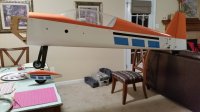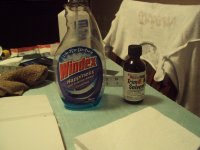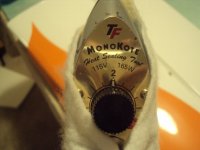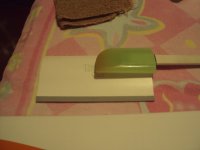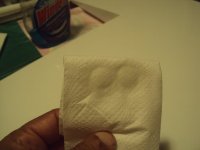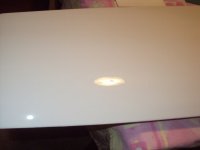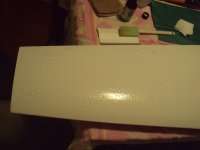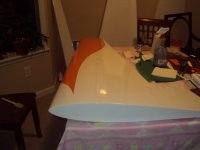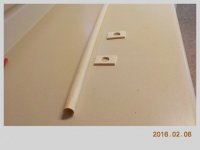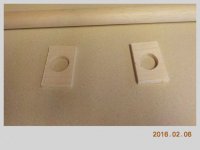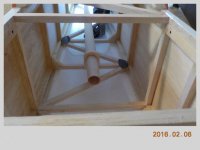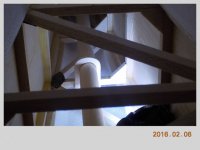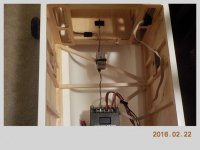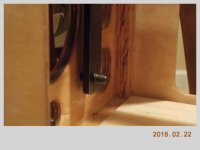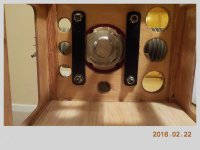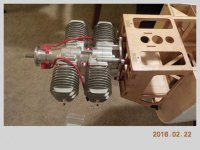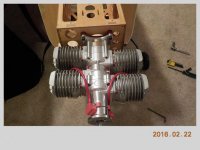Ok, so this is my method on Monokote over monokote.
Tools, Windex, paper towels, alcohol, Monokote trim solvent, a cooking squeegee and your covering hot iron with felt on it NOT with the sock. The felt is much softer.
Tips, practice doing all this an some pieces of balsa before you do it on your model, DO NOT use the trim solvent on large areas, this stuff is very aggressive and it activates the glue on contact and you will not have time to get bubbles out.
Step 1, I start by cleaning the entire area where you are planning on adding the covering with the alcohol, this will remove any oil from the monokote that you may have added on it while eating that big fat burger or chicken wings ( just a joke so don’t take it personal LOL).
Step 2, Ensure the covering on the balsa has not lifted and if so go over it with the Iron.
Step 3, Now the fun begins, using a paper towel dabbed the solvent on it (make sure you put the cap back on the solvent, stuff is expensive) go over the area you are laying down the piece, immediately after, spray the area with Windex and do not be shy with it. Now you can remove the plastic from the back of the covering and lay it down and position it where you want it, you should be able to slide it around some.
Step 4, At this time you can start squeegeeing out the Windex FROM THE MIDDLE out to the edges and keep the squeegee wet, this will help it glide over the covering, keep some small amount of pressure on the opposite side while you push the Windex out or the piece may move on you. Using towels soak up what is being removed in the same direction, from the middle out, if you go the other way you WILL lift the covering. If you are happy with it let it sit for 15 minutes, then go over it again with the squeegee, middle out.
Step 5, Sit back have a beer or twelve and admire your work.
Step 6, With LOW heat go over it and AGAIN from the middle out, take your time. To make sure the covering does not pull up dab more trim solvent and go around the edges.
Step 7, Ask your significant other, What do you think? And she will reply AAAAHHHH!!! What am I looking at?
Step 8, you just got your feelings hurt.
Step 9, More beer or at this time Tequila
Step 10, Well!! after all the beer and Tequila, you will be laying down admiring your work from the floor.
This was fun, one more note, I almost forgot. When you peel off the plastic from the Monokote try not to crinkle it or it will show up, since you are not putting a ton a heat on it, it will not shrink.
Hope this helps.

